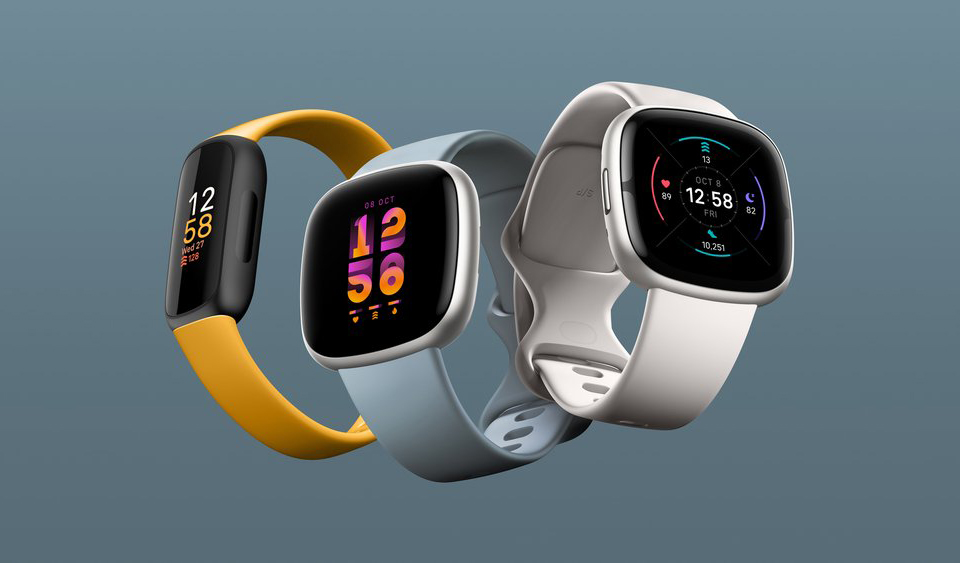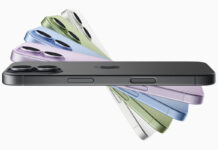
Fitbit launched three new wearables to add to its lineup in the form of two smartwatches and a fitness band activity tracker, as it ramps up health tracking features.
The Fitbit Sense 2 is the premium of the latest trio, expanding on what the original model offered. The Fitbit Versa 4 takes the brand’s smartwatch capabilities into a more vigourous focus on workouts and health tracking. Lastly, the Fitbit Inspire 3 brings fitness tracking to a smaller footprint that’s even easier to wear.

The new Fitbit Sense 2
Fitbit had previously tailored the Sense into more of a health-focused smartwatch, and that continues here. You get all the same sensory technology and tracking abilities, including the ECG (electrocardiogram), EDA (electrodermal activity), and heart rate monitoring. Not to mention you get it all in a smaller body this time.
What’s new is the Body Response sensor that uses the EDA sensor to consistently track your stress levels throughout the day. It combines heart rate, heart rate variability, and skin temperature to gauge how your body stresses. From there, it gives you a score in Fitbit’s Stress Management Score, along with guidance on how to improve. That could include notifications on when to take a break and do a breathing exercise to relax.
The existing sensors see improvements in execution, which is partly why they can work together more seamlessly now. You can still measure blood oxygen (SpO2), skin temperature, heart rate variability, and more. What’s neat is that the watch also has a photoplethysmography (PPG) algorithm to help look for signs of atrial fibrillation (AFib) while sleeping or lying down.
While the Sense 2 will run on a newer operating system, it will not be Google’s Wear OS. Google’s apps will play a role, though. For instance, you will be able to get turn-by-turn navigation via Google Maps on your watch, and Google Wallet will enable payments from your wrist while wearing the Sense 2. They won’t be ready at launch, but will come in a later update.
Battery life appears to be similar to what the previous model could do. Fitbit is rating it at about six hours or more, though fast charging for 12 minutes can help get you through the full day.

Introducing the Fitbit Versa 4
Where the Sense 2 primarily focuses on health tracking, the Versa 4 is more the fitness and workout watch. It can support up to 40 exercise modes, including common ones, like HIIT, weightlifting, crossfit, yoga, and more. That’s on top of the countless workouts available through Fitbit Premium.
Built-in GPS (like the Sense 2) also enables you to track distance and pace while doing any outdoor activity. The same sensor lineup is back from the previous Versa as well, save for the Body Response sensor that appears to be exclusive to the new Sense 2.
Fitbit did make the watch smaller than its predecessor, yet also keep battery life very stable. You get the same six-hour performance per charge, with a 12-minute fast charge pushing you through a full day. And wisely, Fitbit continues to use the same charger for both the Sense 2 and Versa 4, so two people can use the same charger.

A new Inspire 3
The Inspire 3 continues Fitbit’s tradition of making this its entry-level activity tracker. The most obvious difference from before is the new colour AMOLED screen. It just adds an extra layer of engagement when looking at stats and details directly on the tracker.
It can track a fair bit, like passive AFib tracking, blood oxygen (SpO2), skin temperature, and sleep quality. You can see a Stress Management Score, along with Active Zone Minutes to gauge just how active or sedentary you’ve been.
Some features are part of a Fitbit Premium subscription, but there’s plenty there to start with. Like the other two new products, Fitbit will give you the first six months of Premium free to try out. Battery life looks to be impressive at up to 10 days, though that will fluctuate based on usage.
Fitbit Premium
Premium continues to evolve, and Fitbit is giving away six months of access across all three of these devices. Content partnerships grew since launching in 2019, with brands, like Calm, Breethe, Aaptiv, barre3, Down Dog, Physique 57, Yoga Studio: Mind and Body, Daily Burn and PopSugar, among others, taking part.
Premium runs off the Fitbit app. After the trial, it costs $13.49 per month or $106.99 for a full 12 months.
Coming soon
All three devices are coming September 23, but you can pre-order yours now. The Sense 2 will come in shadow grey, blue mist, and lunar white. The Versa 4 will come in black, waterfall blue, and pink sand. And then the Inspire 3 will come in midnight zen, morning glow, and lilac bliss.
All three are compatible with other bands, including those from their predecessors, so you can style them the way you want for any occasion.



I love the Fitbit range of devices and glad to see Google putting more features on them. Turn by turn on my watch would be useful when I’m walking around a new city and I’m a fan of tap to pay in digital wallets. The best thing about Fitbit watches for me has been the battery life. I have a fitbit and I charge it once a week or so. The Versa and Sense ranges with 6 days of battery life easily beat the Apple Watch.
Comments are closed.